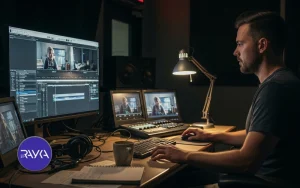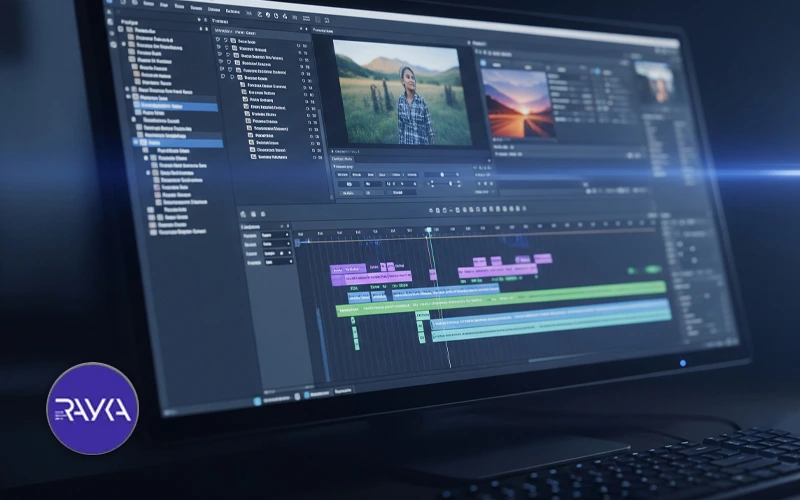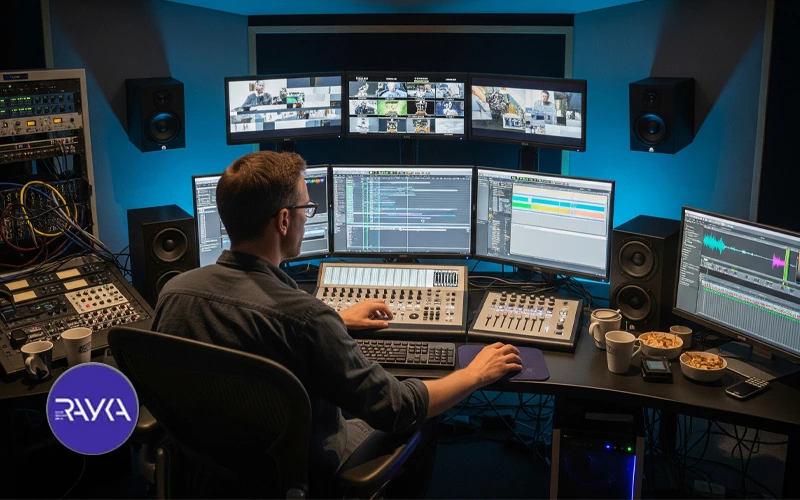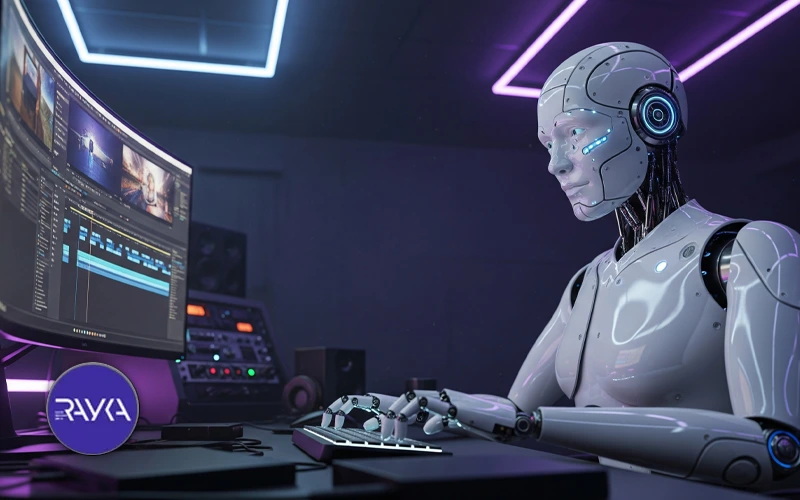
Editing feature films is one of the most important stages of filmmaking, playing a key role in shaping the narrative and conveying emotions to the audience. With technological advancements, innovative methods such as AI-assisted film editing have emerged, making the process faster, more creative, and more professional. In this article, we provide a comprehensive overview of feature film editing, the differences between editing a feature film and a promotional teaser, the best software tools, the various stages of editing, and the role of AI in this field.
Film editing is the process of assembling and refining visual and audio clips into a coherent and engaging narrative. This stage is the heart of any feature film, allowing the story to be conveyed more effectively and impactfully. Today, with modern technologies like AI-assisted filmmaking, many time-consuming editing tasks can be performed with higher precision and speed, enabling the creation of unique cinematic effects.
Editing a feature film and editing a promotional teaser are two distinct processes, each with its own goals and methods. The table below compares these two types of editing:
| Feature | Feature Film Editing | Promotional Teaser Editing |
|---|---|---|
| Goal | Creating a complete and deep narrative | Grabbing attention quickly and delivering a short message |
| Duration | 90 minutes to several hours | 15 to 60 seconds |
| Editing Style | Smooth, narrative-driven, emphasizing emotions and character development | Fast-paced, eye-catching, focused on quick audience engagement |
| Use of Music | Score with precise changes matching the scenes | High-energy music or short slogans |
| Target Audience | Viewers seeking story depth and emotional engagement | Fast-content consumers on social media and advertising platforms |
Choosing the right editing software for feature films has a significant impact on the final quality of the project. The top film and promotional teaser editing software includes:

Editing a feature film is a complex, multi-stage process where each phase plays a critical role. Below are the main stages explained in detail:
All recorded footage, audio, and other necessary files are imported into the editing software. Files are carefully categorized and labeled for easy access, making the editing workflow faster and more organized.
This stage involves assembling the scenes in order and establishing the overall narrative structure. The goal is to form the basic storyline and remove unnecessary footage. At this point, details are not yet refined.
After the rough cut, precise editing takes place. Scene timing is adjusted, audio and visuals are synchronized, and transitions and effects are applied smoothly for a professional look.
If the film requires visual or audio effects, they are incorporated at this stage to increase the film’s visual appeal and enrich the audience experience. Editors and VFX teams collaborate closely to achieve the best results.
Color grading is a vital stage that gives the film its visual identity. Lighting, color, and contrast are adjusted to match the story’s mood and setting. Professional color grading enhances the film’s emotional tone.
Once all editing stages are complete, the film is exported in formats suitable for theaters, online platforms, or television. Editors perform a final quality check to ensure the film is ready for release.

AI has become an important tool in modern film editing. Both free and commercial AI tools can enhance quality and speed:
Using AI not only reduces editing time but also improves overall production quality. This technology is especially valuable in large-scale projects with extensive footage.

Feature film editing is both an art and a technical skill requiring precision, creativity, and expertise. Advanced editing software and following structured editing stages ensure high-quality results.
The integration of AI accelerates the editing process and allows for more creative and professional outcomes. Combining human experience with modern technologies delivers the best results in feature film editing.